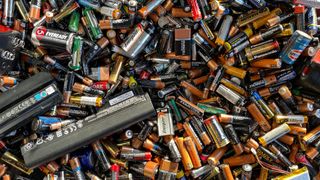Google’s next 4K Chromecast remote will wave goodbye to batteries
>
Google seems to have plans to change the worst thing about its TV remotes, and it’s the same thing that’s terrible about an awful lot of controllers: batteries.
Instead of relying on pesky replaceable cells, the new Google TV remote reference design from TW Electronics — the company that manufactures Google TV remotes — features a photovoltaic panel. This new light-powered remote could charge itself, meaning it would (hopefully) never run out of battery or need a battery change, provided it gets enough light.
Following the recent leak that teased that a new Chromecast with Google TV is on the way – which will most likely be a follow-up to the 2020 Chromecast with 4K-enabled Google TV – we expect this remote to be used. We may also see the design adopted by Google TV-powered displays from Hisense, TCL and its other partners.
Google’s previous Chromecast isn’t quite the best streaming device ever made, but for its price it’s pretty good, so there aren’t too many upgrades that we think this next iteration needs. That said, an improved controller would be a great improvement as it removes another reason for us to need more single-use batteries.
Excited to announce the launch of a self-charging, battery-free #remote control powered by indoor lighting. Developed with #Exeger, the device is #GoogleTV ready and easy to integrate into your existing system. Contact us for more information. #CES2023 #solarpower pic.twitter.com/pO1bycCC2bJanuary 12, 2023
Batteries are exhausted
I despise batteries. In fact, I hate disposable batteries, especially those in TV remotes.
That’s because they always run dry at the most inconvenient times. You then have to look around for a spare only to realize that you’re bad with AAs and those coins, but you’re completely out of the AAA batteries you so desperately need.
Then the same old scheme comes to mind: you find an underused gadget that also relies on AAAs and take its cells for now. The plan works fine for a while until you start using that now battery-less technology and you have to start the process all over again.
But even if that first part goes smoothly, you have to throw the stuff away.
You should not dispose of batteries with the rest of your waste, but they should be taken to a local recycling center or collection point so that the raw materials can be recovered and reused.
Here in the UK the most convenient battery return points are plastic containers which can be found at most local supermarkets. While I can barely remember having to take my life bag with me when I go shopping, I now have a collection that will last over 30 lifetimes. So instead I have a steadily growing pyramid of dead batteries in my kitchen, a monument that annoys me every time I come back from the shops.
And don’t even get me started on the battery-powered tech that’s not included in the box…
The whole situation would improve immensely if the items were rechargeable. And Google’s solar powered remote would go one step further as you don’t even have to think about plugging it in – just keep the curtains open during the day or turn on your lights and the thing will slowly lose power get back.
We’ll have to wait and see if TW Electronic’s reference remote design becomes a physical item, but I hope so.
When the next Chromecast arrives (whether it uses the new Google TV remote or not), be sure to check out our list of the best streaming services so you know where to find the best TV and movies.

